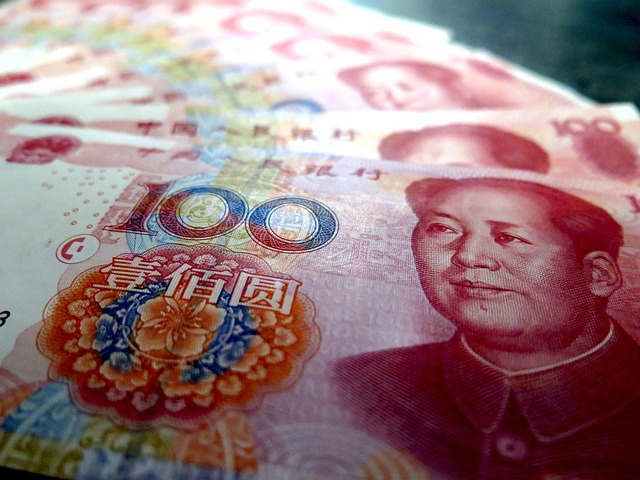Table of Contents
The implementation of the digital yuan, also known as the e-CNY, marks a significant step in China’s efforts to modernize its financial system. This comprehensive guide aims to provide a detailed understanding of the digital yuan, its development, technical aspects, implications for individuals and businesses, international impact, and outlook.
The digital yuan is issued and regulated by the People’s Bank of China (PBOC) and is intended to complement physical cash and existing forms of digital payment. One online trading platform that facilitates transactions with the digital yuan is Yuan Edge Ai, which offers a range of services for individuals and businesses looking to navigate the digital yuan ecosystem.
Understanding the Digital Yuan

The digital yuan is a digital version of China’s official currency, the yuan (RMB), issued and regulated by the People’s Bank of China (PBOC). Unlike cryptocurrencies such as Bitcoin, the digital yuan is centralized and controlled by the government. It is intended to complement physical cash and existing forms of digital payment.
The key features of the digital yuan include its ability to be used for both online and offline transactions, its integration with existing financial infrastructure, and its potential to enhance financial inclusion by providing access to digital payments for those without bank accounts.
Development and Motivation
The development of the digital yuan began in 2014, with pilot programs launched in several Chinese cities starting in 2020. The motivation behind China’s push for a digital currency includes reducing the costs of issuing and circulating physical cash, improving the efficiency of financial transactions, and enhancing financial monitoring and regulation.
The digital yuan is also seen as a way for China to maintain control over its monetary policy and reduce reliance on the U.S. dollar in international trade.
Technical Aspects

The digital yuan is based on a centralized ledger system, with transactions recorded on a blockchain-like platform. However, unlike cryptocurrencies, the digital yuan does not use a decentralized network of nodes to verify transactions. Instead, transactions are verified by a central authority, the PBOC.
The digital yuan is issued and redeemed through a digital wallet, which can be linked to a bank account or used in offline transactions using near-field communication (NFC) technology. Security measures include encryption techniques to protect user data and prevent counterfeiting.
Implications for Individuals
For individuals, the digital yuan offers several advantages. It provides a secure and convenient way to make payments, reducing the need to carry physical cash. It also allows for more efficient and transparent transactions, with the potential to reduce the costs associated with traditional banking services.
However, there are also concerns about privacy and data security, as the digital yuan is issued and monitored by the government. Users may be concerned about the collection and use of their financial data.
Implications for Businesses

Businesses stand to benefit from the digital yuan in several ways. It can streamline payment processes, reduce transaction costs, and provide access to new markets and customers. The digital yuan also opens opportunities for innovation in financial services, such as smart contracts and programmable money.
However, businesses may also face challenges in adapting to the new digital currency, such as the need to update their payment systems and comply with new regulations. There may also be concerns about the impact of the digital yuan on existing payment platforms and financial institutions.
International Impact and Challenges
The digital yuan has the potential to have a significant impact on the international monetary system. It could reduce the dominance of the U.S. dollar in international trade and finance, leading to a more multipolar currency system. However, this could also lead to tensions with other countries, especially the United States, which may see the digital yuan as a challenge to its currency hegemony.
There are also challenges and controversies surrounding the digital yuan. Some critics argue that it could be used for surveillance and control by the Chinese government, while others raise concerns about its impact on global financial stability.
Future Outlook
Looking ahead, the digital yuan is likely to continue to evolve and expand. It is expected to be rolled out more widely in China in the coming years, with the potential to eventually replace physical cash. It could also become a more prominent player in international trade and finance, especially as China seeks to promote the internationalization of the yuan.
However, there are also challenges and uncertainties. The digital yuan will need to overcome technical, regulatory, and geopolitical hurdles to achieve widespread adoption. It will also need to address concerns about privacy and data security to gain the trust of users both in China and abroad.
Conclusion
In conclusion, the digital yuan represents a significant development in the world of digital currencies. Its implementation has the potential to reshape the global financial landscape, with implications for individuals, businesses, and governments around the world. As the digital yuan continues to evolve, it will be important to monitor its progress and assess its impact on the wider economy.
Author Profile
- Blogger and Educator by Passion | Senior Online Media & PR Strategist at ClickDo Ltd. | Contributor to many Education, Business & Lifestyle Blogs in the United Kingdom & Germany | Summer Course Student at the London School of Journalism and Course Instructor at the SeekaHost University.
Latest entries
 FinanceMay 28, 2025Government Unveils Major Crackdown on Tax Avoidance – Up to £6.5 Billion Could Be Reclaimed by 2029
FinanceMay 28, 2025Government Unveils Major Crackdown on Tax Avoidance – Up to £6.5 Billion Could Be Reclaimed by 2029 FinanceApril 28, 2025Rising Tax Pressures Push Directors to Rethink Income Strategies for the New Tax Year
FinanceApril 28, 2025Rising Tax Pressures Push Directors to Rethink Income Strategies for the New Tax Year BusinessApril 7, 2025The Future of Leadership Development in the Remote Work Era
BusinessApril 7, 2025The Future of Leadership Development in the Remote Work Era Business StrategiesFebruary 13, 20254 Ways to Improve Your Brand’s Online Reputation
Business StrategiesFebruary 13, 20254 Ways to Improve Your Brand’s Online Reputation





